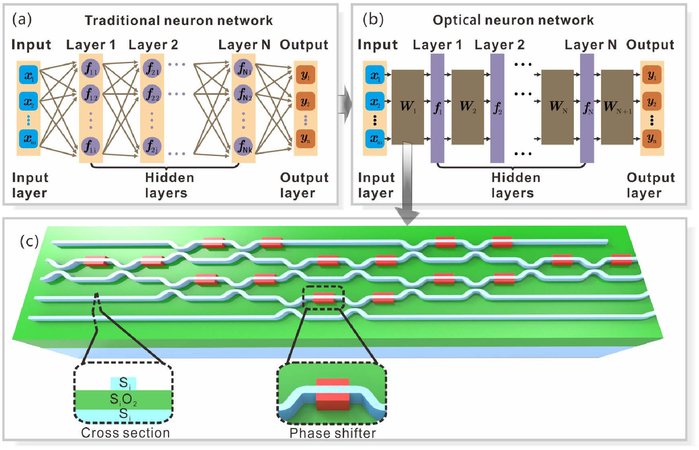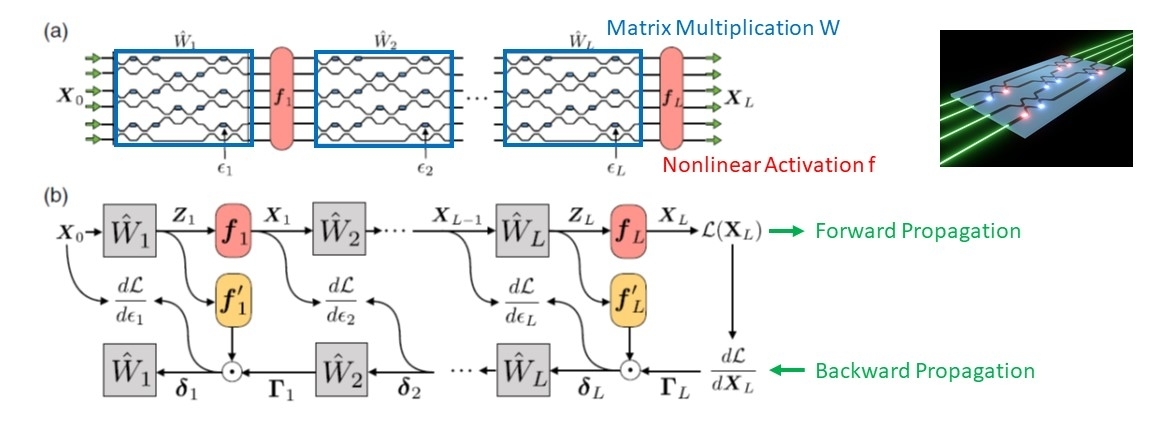The Future of Deep Learning Is Photonic

A deep learning network such as convolutional neural network has three major operations: (1) Convolution: this involves the multiply the filter matrix with the input image, (2) Pooling: this involves the matrix from convolution to multiplied by a sparse matrix, (3) Nonlinear Activation: this apply a nonlinear function such as rectifier.

While these linear matrix calculations are the most computationally demanding part of deep learning, particularly as the size of the network grows. This is true for both training (the process of determining what weights to apply to the inputs for each neuron) and for inference (when the neural network is providing the desired results).
Researchers have shown that it is possible to train artificial neural networks directly on an optical chip. The significant breakthrough demonstrates that an optical circuit can perform a critical function of an electronics-based artificial neural network and could lead to less expensive, faster and more energy efficient ways to perform complex tasks such as speech or image recognition.
The Fan Group (led by Professor Shanhui Fan of Stanford University) engages in theoretical, computational and experimental research in photonics, with an emphasis on nanophotonic structures and solid state devices.